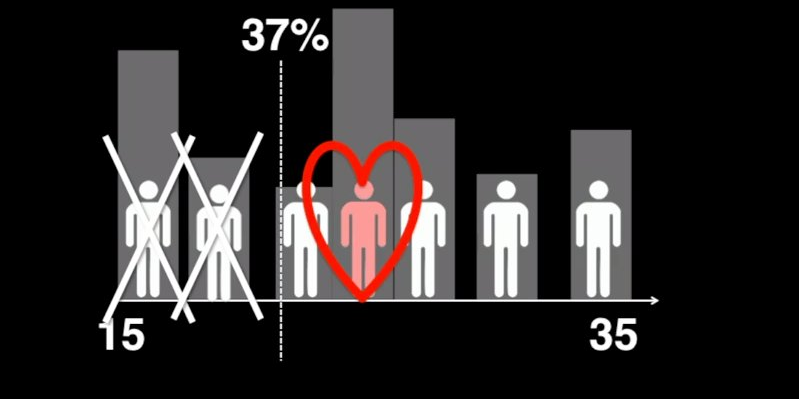How to use math to find the best job candidate — or spouse

Whether you're looking for the best job candidate or the most suitable partner to settle down with, finding The One can be nerve-wracking, since you don't know who else is out there or how they compare to the people you've already met.
Luckily, a simple mathematical strategy called the "optimal stopping theory" can help you find the best person for the job.
Hannah Fry, a mathematician at the UCL Centre for Advanced Spatial Analysis in London, explains the theory in her 2014 TED Talk and recently released book, "The Mathematics of Love." Essentially, it helps you pinpoint when to stop searching and make a decision.
She uses the example of trying to find your ideal romantic partner. In this scenario, you'd spend some time playing the field and getting a feel for the marketplace, she says. You'd reject the first 37% of your suitors, and then marry the next person you meet who's better than anyone who came before them.
Following this theory, if you were going to date 10 people in your lifetime, you'd reject your first four lovers as marriage material, Fry says. And if you thought you'd date 20 people, you'd reject the first eight.
Since it's difficult to predict how many people you might go out with, Fry notes that you can also apply this theory to a period of time. For example, if you started dating when you were 15 and wanted to be married by the time you were 35, you'd reject everyone who came along within the first 37% of your dating window — or until you were about age 22 — and then settle down with the next person who's better than anyone you dated before.

If you didn't follow this strategy and chose one of your approximately 20 potential partners at random, Fry says you'd have a 5% chance of finding your true love. If you did follow it, you'd increase your chances of finding Mr. or Mrs. Right to 38.4%, she says.
The same logic applies to hiring. In fact, "the secretary problem" is the most famous example of the stopping theory in practice. For instance, if you're looking for a new assistant and are interviewing candidates, you never really know if there's someone out there who could be better than all the people you've seen so far. But you can't interview forever. At some point, you have to make a decision.
Following the theory, your best bet is to reject the first 37% of candidates you see and then hire the next person who's better than everyone you've interviewed so far. Another way to think about it: If you have three months to fill the position, you'd reject all of the candidates you meet in the first month, and then hire the next best candidate.
Of course, this plan doesn't come without risks. You might meet The One in your initial rejection phase, and then you'll never find anyone else as good. Alternately, you might meet a bunch of dullards in the rejection phase, and then select the next person who's modestly better but still isn't great.
"It's a fine balance between having the patience to wait for the right person and the foresight to cash in before all the good ones are taken," Fry writes in her book. "Considering all the risks, though, this is still the best possible strategy available."
Watch Fry's TED Talk on the mathematics of love:
More from Business Insider:
The first thing Abby Wambach did after winning the World Cup was rush to the stands to kiss her wife
GREECE SAYS 'NO'; THOUSANDS CELEBRATE; EMERGENCY SUMMIT CALLED
This mathematical principle reveals the best way to get anything you want in life

